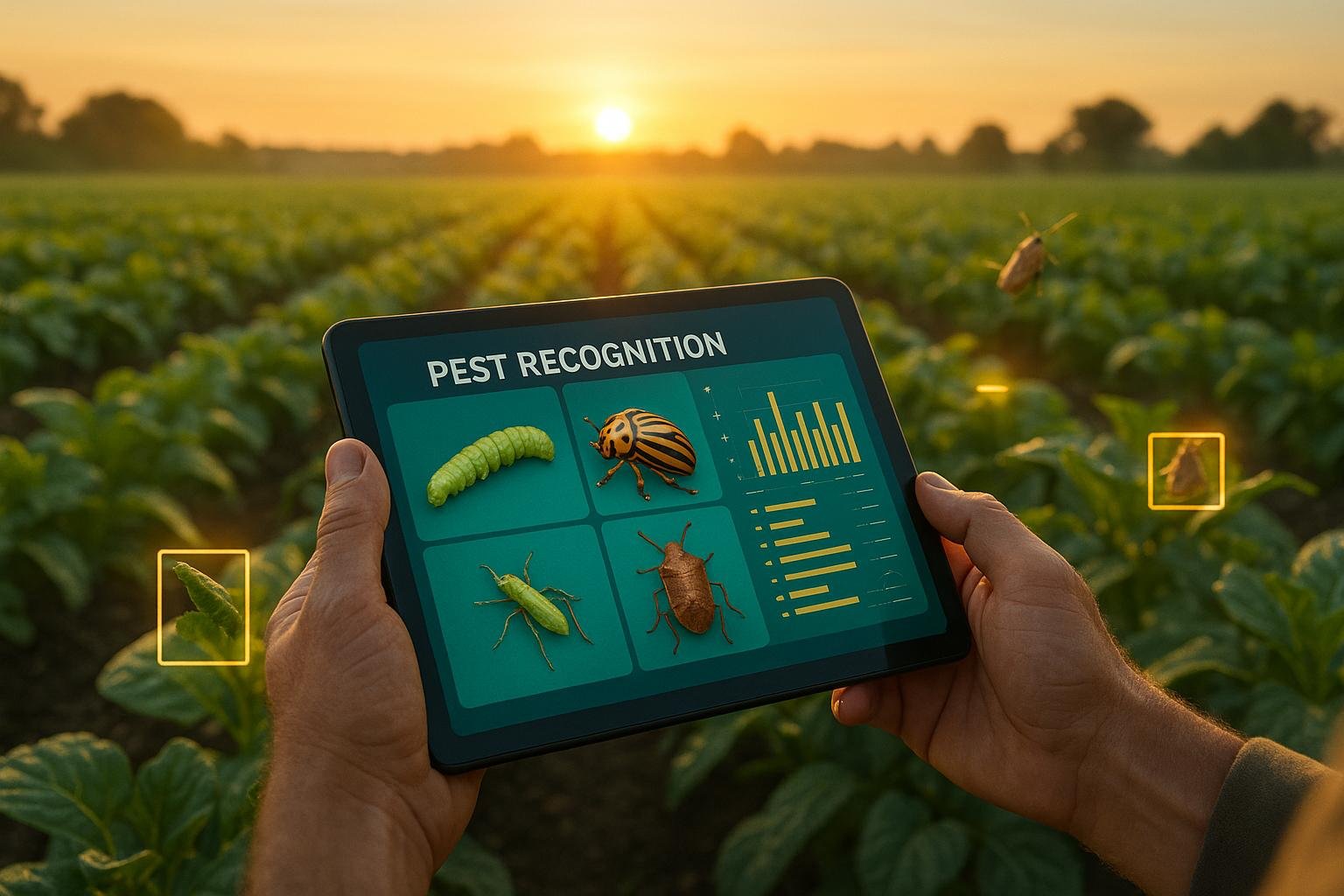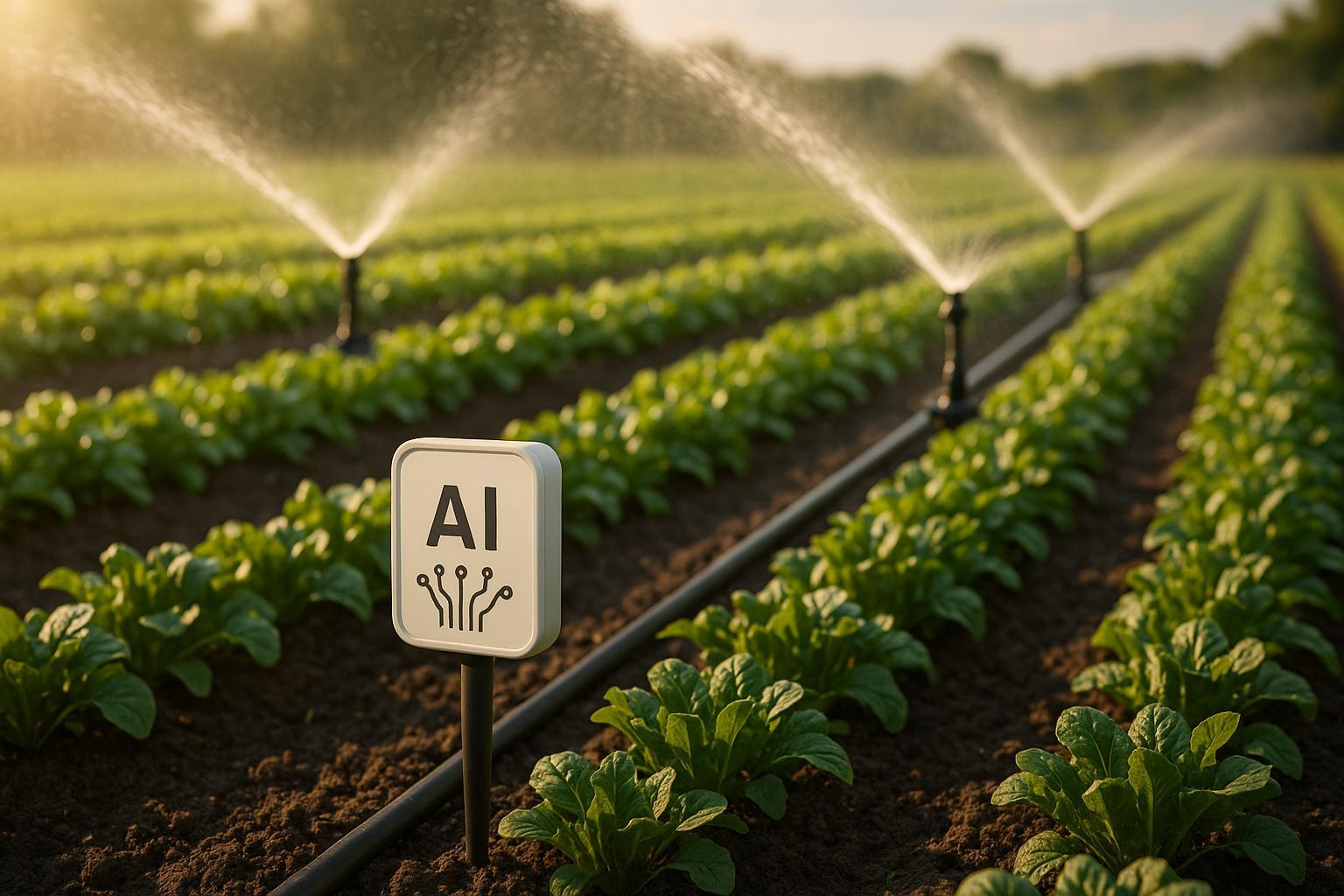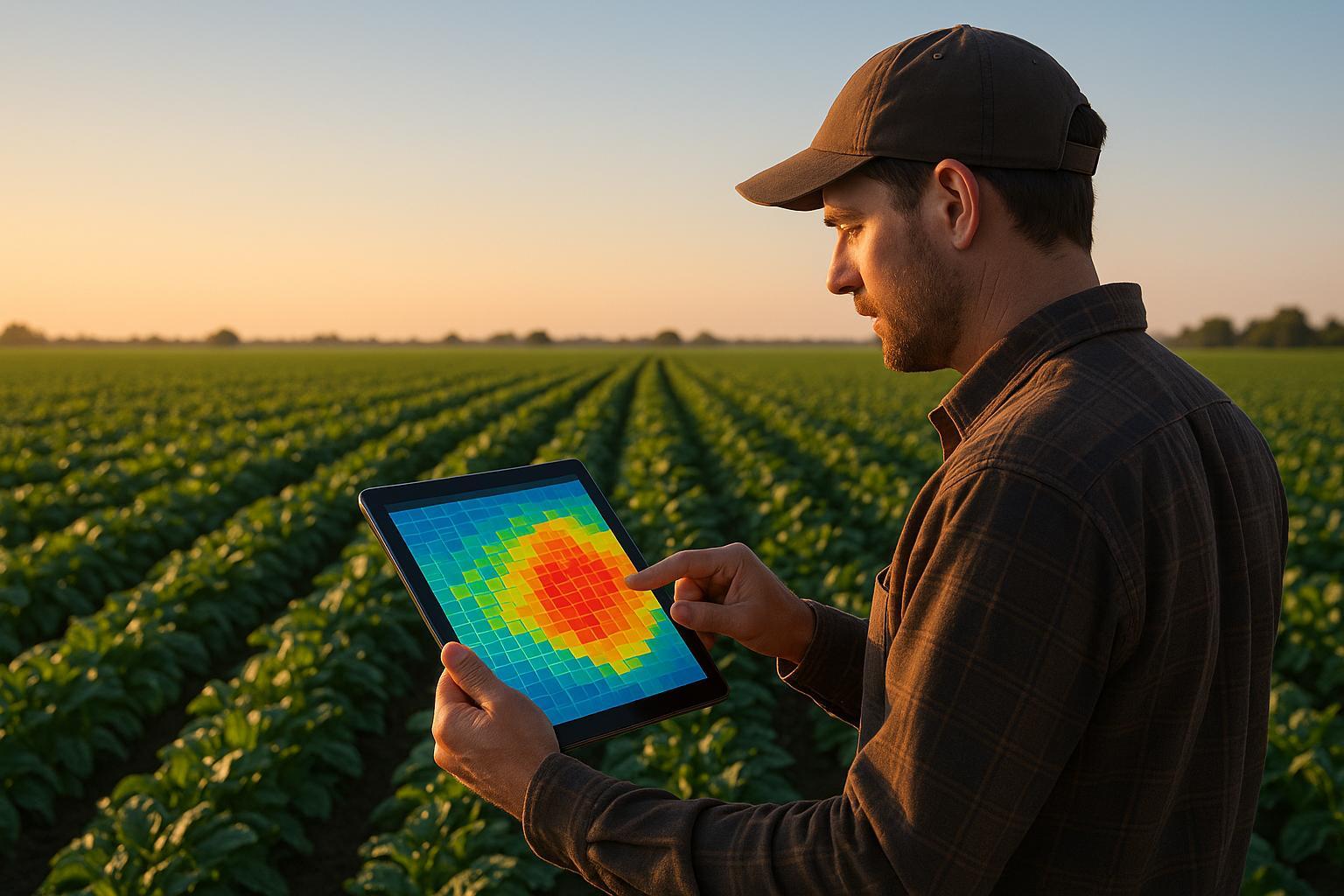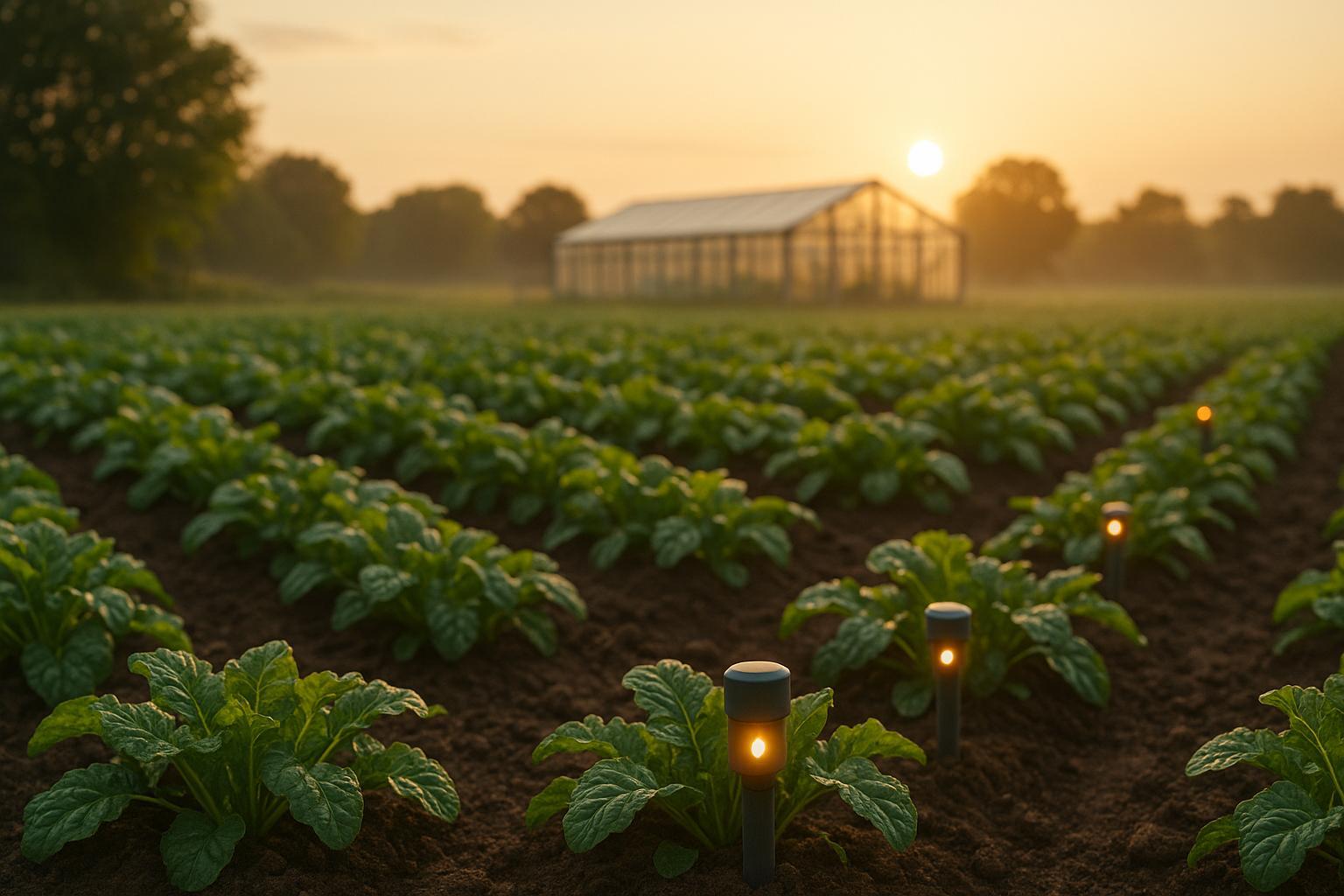AI Datasets for Pest Recognition: Explained

AI is transforming pest management in agriculture, reducing crop losses and improving food security. Here's what you need to know about how datasets power these systems:
- Why It Matters: Pests cause 20–40% of global crop losses annually, costing over $220 billion. AI can help detect and manage infestations early, saving crops and reducing environmental harm.
- Key Tools: AI relies on datasets like TOM2024 and AgriPest, which contain thousands of labeled images to train models for identifying pests and diseases with high accuracy.
- Challenges: Building datasets is tough due to data scarcity, class imbalances, and regional differences in pest behavior. Expert annotations are critical but costly.
- Synthetic Data: This computer-generated data fills gaps in real-world datasets, improving model performance while addressing issues like rare species and environmental variations.
- Future Trends: Combining real and synthetic data is the best approach, with emerging technologies like diffusion models and automated data collection driving progress.
| Feature | Real-World Data | Synthetic Data |
|---|---|---|
| Diversity | Limited by collection constraints | Can simulate rare scenarios |
| Cost | Expensive | Lower, but computationally intensive |
| Scalability | Limited | Highly scalable |
| Realism | Captures real-world complexities | May lack subtle environmental details |
AI-driven pest recognition is becoming more effective by blending real and synthetic datasets, helping farmers protect crops and reduce losses.
Key Pest Recognition Datasets
Leading Dataset Examples
Collaborative efforts have led to the development of several datasets that serve as essential tools for training AI models in pest recognition.
TOM2024 focuses on tomato, onion, and maize crops, offering 25,844 raw images and over 12,000 labeled images across 30 distinct classes. These include healthy crops, pest infestations, and diseases. Specifically, it features 14 classes for tomatoes (covering two major pests and 12 disease or healthy states), 6 classes for onions (emphasizing caterpillar infestations), and 10 classes for maize (including Fall Armyworm Activity, Armyworm, and Aphids) [3][4].
AgriPest, on the other hand, specializes in detecting tiny pests across wheat, rice, corn, and rape. This dataset includes 49,700 images with 264,700 annotated bounding boxes for 14 pest species. Notably, pests in AgriPest occupy just 0.16% of each image, mimicking real-world conditions. Compared to general-purpose datasets like PASCAL VOC, AgriPest is four times larger in image samples and eight times larger in annotated objects [5].
| Dataset | Crops Covered | Pest Species | Total Images | Key Features |
|---|---|---|---|---|
| TOM2024 | Tomato, Onion, Maize | 6 major pests | 25,844 raw, 12,000+ labeled | 30 classes, integrates pests and diseases |
| AgriPest | Wheat, Rice, Corn, Rape | 14 species | 49,700 | 264,700 bounding boxes, focuses on tiny pests |
These datasets highlight the key attributes needed for effective pest recognition training.
What Makes Datasets Effective
The usefulness of pest recognition datasets hinges on several critical factors that directly influence the performance of AI models. Broad species coverage is essential, exposing models to a wide variety of pest types across different developmental stages and environmental conditions. High-quality annotations, combined with diverse imagery from various regions, farming methods, and climates, contribute to the robustness of these models.
Separating pests by life stages and accounting for their visual traits and harmful characteristics ensures accurate detection at every stage of development. Precise localization through bounding boxes, along with targeted data augmentation to address class imbalances, further enhances the reliability of pest detection in practical scenarios.
When these elements are present, AI systems have demonstrated impressive results - for instance, achieving a 99.31% success rate in detecting tomato maturity and 90.4% accuracy in diagnosing apple black rot [6].
Insect-Foundation: A Foundation Model and Large-scale 1M Dataset for Visual Insect Understanding

Common Dataset Development Challenges
Building effective pest recognition datasets comes with its fair share of challenges, many of which stem from the complexities of agricultural environments and the specialized expertise needed to create reliable training data. These hurdles can significantly impact the performance of AI models.
Data Scarcity and Class Imbalance
High-quality, labeled data for pest recognition is hard to come by, creating a major obstacle for advancing AI in this field. This issue becomes even more pronounced when dealing with rare pest species or specific life stages that are seldom observed in nature. Such scarcity limits the progress of AI models in identifying plant diseases and pests effectively [7].
Class imbalance further complicates matters, as it skews model predictions. For instance, the IP102 dataset achieved only 32.1% accuracy for rice pests, highlighting the difficulties caused by uneven class representation [9][12]. Additionally, the varied appearances of pests and the complex, ever-changing backgrounds in agricultural settings make feature extraction particularly challenging [7][8]. Add to this the variability in environmental conditions, and it becomes clear that collecting a robust dataset requires significant effort and resources [8].
These data limitations are only compounded by the influence of environmental and regional factors.
Climate and Regional Differences
Climatic and geographical variations add another layer of complexity to dataset development. Shifting weather patterns can alter pest behaviors and distributions, making it difficult to create datasets that are both comprehensive and up-to-date [10]. For example, researchers in Australia observed that between 1990 and 2020, changes in climate reduced the effectiveness of the TIMERITE® model for controlling redlegged earth mites by 8.37% [10]. By incorporating updated climatic data and adjusting control strategies earlier in the season, they developed a new Dynamic Climate Dynamic Offset (DCDO) model, which predicted optimal pest control dates 26.9 days earlier than the original model [10].
Regional differences in pest pressures also create challenges. Invasive crop pests alone account for over $65.5 billion in agricultural losses annually in Africa [11]. This geographic bias can result in datasets that overlook economically critical species, limiting the ability of AI models to generalize across diverse climates and regions.
Expert Annotation Requirements
Accurate pest annotations require domain-specific expertise, making human input indispensable. Expert annotators bring the necessary knowledge to ensure that labels are precise, contextually appropriate, and capture critical details that automated tools might overlook [13]. In plant pathology, this expertise is crucial for identifying relevant features in images, enabling effective annotations [16].
However, relying on non-experts can lead to errors in object-box annotations [14], and inconsistencies in human labeling can negatively impact model performance. For example, annotation errors have been shown to reduce model tracking accuracy from 73.6% to 54.2% [13]. To mitigate this, clear annotation guidelines are essential for maintaining consistency across datasets [15].
The challenges don’t stop there. Factors like complex backgrounds, varying lighting conditions, and differing object scales make image annotation even more difficult [16]. Additionally, the cost and time involved in having experts review thousands of images can make the process prohibitively expensive for many research projects.
Overcoming these annotation hurdles is critical for creating robust datasets that can support more effective AI-driven pest management. As Jucheng Yang from the College of Artificial Intelligence at Tianjin University of Science and Technology explains:
"For Research Topics in plant disease and pest recognition that rely heavily on domain expertise, further refining the objectives of recognition and expanding the applicability of models to minimize data dependency in real-world environments are two key objectives for future development." [7]
sbb-itb-4d6a8dd
🚀 Ready to Reinvent Your Garden?
Join thousands of homeowners who have transformed their gardens using our AI design tool. Upload one photo to explore endless possibilities.
Get your AI garden designs →How Synthetic Data Helps Pest Recognition
Collecting and annotating real-world pest data is no easy task, often plagued by challenges like limited access to diverse datasets and time-consuming manual labeling. Enter synthetic data - a game-changer that addresses these hurdles and improves the performance of AI-powered pest recognition systems. Let’s break down what synthetic data is, how it’s used, and where it falls short.
What is Synthetic Data?
Synthetic data refers to computer-generated data designed to replicate real-world scenarios. In the context of pest recognition, this means creating lifelike images of insects, plant diseases, and agricultural settings using computational tools instead of relying solely on field photography.
There are several ways to generate synthetic pest data. Basic techniques like image augmentation involve simple tweaks - rotating, scaling, or adjusting colors in existing images. On the more advanced side, technologies like Generative Adversarial Networks (GANs) and Variational Autoencoders (VAEs) can produce entirely new images by learning patterns from existing datasets. The latest innovation, Denoising Diffusion Probabilistic Models (DDPMs), generates images from random noise, producing highly realistic results even when annotated datasets are scarce [18][1]. These models are particularly useful for creating diverse, high-quality images that closely resemble real pest photographs.
To make synthetic images look as real as possible, researchers use blending techniques like Poisson blending and Dual-Canny Edge Detection (DCED), which ensure seamless integration of synthetic elements while preserving texture details [18]. Tools like the Segment Anything Model (SAM) further enhance precision by generating accurate object masks, enabling more effective data creation [18]. With this groundwork in place, let’s explore how synthetic data is transforming pest recognition.
Uses of Synthetic Data
Synthetic data is a powerful tool for balancing datasets and addressing gaps in real-world collections. A common issue in pest datasets is the "long-tail problem", where certain pest species are underrepresented. Synthetic data helps tackle this by generating realistic images to fill in these gaps [17]. For instance, diffusion models have been used to create realistic pest images, significantly improving dataset balance. One study using the IP102 dataset found that fine-tuning diffusion models led to a 5.3% boost in classification accuracy [17].
This approach is especially helpful for rare pest species or specific life stages that are hard to capture naturally. By expanding minority classes, synthetic data ensures that even less-common pests are adequately represented [17].
Another advantage is addressing environmental and regional variations. Synthetic images can simulate different conditions - like changes in light intensity or color - preparing AI models to perform well across diverse field scenarios [20]. For example, a study using GANs to generate temperature-specific data for greenhouses in Murcia, Spain, showed that adding synthetic data improved AI model accuracy compared to using only real data [19]. These advancements make it possible to build pest recognition systems tailored to local agricultural needs, even in areas where data collection is challenging.
For tools like AIGardenPlanner, integrating synthetic data means improved pest identification, even in difficult or unpredictable field conditions.
Synthetic Data Limitations
While synthetic data offers many benefits, it’s not without its challenges. One key issue is the realism gap - synthetic images may not fully replicate the complexities of real-world conditions, which can affect model performance in the field. Studies show that replacing real data entirely with synthetic data often results in lower accuracy [18]. However, combining real and synthetic data can yield impressive results. For example, supplementing real datasets with 25% synthetic data has been shown to boost balanced accuracy to 95.75% and F1-score to 93.70%, though adding more synthetic data beyond this point often leads to diminishing returns [18].
Basic image augmentation techniques also fall short when it comes to mimicking real-world scenarios, as they may fail to capture subtle environmental variations [17]. Even advanced generative models like GANs and diffusion models can struggle with unpredictable factors like lighting changes or weather effects, leaving a gap between synthetic and real data.
Another limitation is the resource-intensive nature of creating high-quality synthetic data. Training models like GANs or DDPMs requires significant computational power and expertise, which can be a barrier for smaller research teams.
Despite these challenges, the field is evolving rapidly. Some researchers predict that by 2030, synthetic data could even surpass real data in importance for training AI models [18]. For now, the best approach is a hybrid one - strategically combining synthetic and real-world data to leverage the strengths of both while minimizing their weaknesses.
Real vs Synthetic Datasets Comparison
When developing AI systems for pest recognition, researchers face a key decision: whether to rely on real-world data or synthetic data. Each comes with its own set of benefits and challenges, and the choice can significantly influence the effectiveness and practicality of pest detection systems.
Real-world datasets capture the intricate and often unpredictable nature of agricultural environments. In contrast, synthetic datasets offer unmatched speed and scalability, making them a tempting option for many projects. In fact, Gartner estimates that by the end of 2024, 60% of the data used in AI will be synthetic [21]. This trend highlights synthetic data's ability to generate large volumes of training material quickly, sidestepping privacy concerns and cutting costs.
The agricultural sector, in particular, feels the pressure to make this choice wisely. Pests and diseases claim up to 40% of annual agricultural yields [26], making effective detection systems essential for food security. At the same time, data scientists spend over 60% of their time on tasks like data collection, organization, and cleaning [25]. Synthetic data can alleviate some of this burden by streamlining the process.
Synthetic data complements the realism of field-collected data by accelerating availability and introducing diversity. This combination is crucial for building robust pest recognition systems capable of adapting to varied conditions.
Pros and Cons of Each Type
Here's a closer look at how real-world and synthetic datasets compare across key features:
| Feature | Real-world Datasets | Synthetic Datasets |
|---|---|---|
| Diversity | Reflects actual conditions but may be limited by collection constraints | Can be tailored for diverse scenarios, including rare edge cases |
| Cost | Expensive due to collection, annotation, and privacy compliance | Lower, as costs are mainly computational |
| Scalability | Limited by availability and seasonal pest cycles | Highly scalable; data can be generated as needed |
| Realism | Captures real-world complexities and nuances | May lack subtle environmental patterns and details |
| Privacy | Requires anonymization and compliance with regulations | Privacy-friendly; no real-world sensitive data involved |
| Bias | Mirrors biases inherent in collection methods and regions | Can introduce biases from the generation models |
| Annotation | Requires expert manual or semi-automated annotation | Automatically labeled during generation |
Real-world data is unbeatable when accuracy and real-world applicability are top priorities [22]. For pest recognition systems that need to handle the diverse and unpredictable conditions of agricultural fields, real data provides the "ground truth" that synthetic data often struggles to replicate. The noise, inconsistencies, and biases in real datasets can actually help models prepare for the challenges of real-world deployment [21].
On the other hand, synthetic data proves invaluable in situations where speed, scalability, or the need for rare or sensitive data is critical [22]. For example, when training models to recognize uncommon pest species or simulate specific environmental conditions that are hard to document naturally, synthetic data can fill these gaps. It also serves as a controlled testing environment for AI systems before they are applied in the field.
Interestingly, research indicates that combining synthetic data with real-world datasets improves performance. However, fully replacing real data with synthetic alternatives often reduces accuracy due to the inherent differences between synthetic and real-world conditions [24].
Summary and Future Directions
The field of AI-driven pest recognition continues to grow, leveraging both real-world and synthetic data to tackle agricultural challenges. With pests and diseases causing 30–40% of global crop losses annually [27], the demand for accurate and scalable detection systems is more pressing than ever.
Key Points
High-quality datasets are the backbone of effective pest recognition systems. Real-world datasets offer the authenticity needed for production-ready AI models but come with challenges like high costs, seasonal restrictions, and regional biases. Synthetic data, on the other hand, provides a cost-effective and scalable alternative, addressing issues like class imbalances and ensuring privacy. Gartner predicts that synthetic data will surpass real data in importance by 2030 [27], thanks to its ability to simulate controlled variations in lighting, backgrounds, and pest positioning.
A hybrid approach that blends real and synthetic data shows immense promise. Research highlights that training models with an equal mix of both can achieve detection accuracy of 85.89%, outperforming baseline models by 1.23% [2]. This method capitalizes on the strengths of real data while benefiting from the scalability and diversity of synthetic data.
"The experimental results demonstrated that the use of synthetic data reduces the demand for real data. The proposed method may provide a novel solution for providing training data with correct annotations for insect detection, without tedious image collection and manual labeling." [2]
Building on these advancements, researchers are exploring ways to overcome current challenges and unlock new opportunities in pest recognition.
Future Research Opportunities
Emerging technologies and methodologies are shaping the future of pest recognition. One promising development is the use of Denoising Diffusion Probabilistic Models (DDPMs), which are proving to be strong alternatives to traditional GANs and VAEs for generating synthetic images. These models are simpler to implement and can produce high-quality pest images, achieving mAP50 scores of 0.66 with advanced detection models [23].
Another key challenge is bridging the gap between synthetic and real data. Researchers are experimenting with advanced blending techniques to enhance realism. For example, Poisson blending has shown better recall performance compared to Gaussian blurring, while Gaussian methods excel in improving precision [23]. Additionally, tools like CycleGAN are being used to refine synthetic datasets, making them more realistic and effective.
For U.S. agriculture, these advancements hold particular significance. Integrating technologies such as UAVs and IoT devices can automate data collection, capturing diverse pest scenarios across various climatic zones and growing seasons. This would result in more comprehensive datasets tailored to the unique conditions of American farms.
Physics-based simulations represent another exciting frontier. These simulations can generate dynamic datasets, capturing pest behavior, movement patterns, and interactions with plants. Unlike static image datasets, this approach provides a deeper understanding of pest dynamics.
Tools like AIGardenPlanner are well-positioned to incorporate these innovations, offering localized pest identification and management recommendations based on specific climates and regions.
The future of pest recognition lies in the thoughtful integration of real and synthetic data, combined with advancements in generative models and automated data collection systems. These developments promise to make pest management more efficient, accessible, and affordable for farms of all sizes across the United States.
FAQs
How does synthetic data help improve AI models for recognizing pests in agriculture?
Synthetic data is becoming a game-changer in improving the accuracy of AI models for pest recognition. By leveraging tools like generative AI, it’s possible to create synthetic images of pests that mimic a wide range of real-world conditions. This allows AI models to better recognize pests across various species and environments.
One major advantage is that synthetic datasets significantly reduce the need for collecting large amounts of real-world data, which can be both time-consuming and expensive. They also help fill critical data gaps, such as images of rare pest species or those in unusual environmental conditions. This leads to more reliable and precise pest detection, making it a valuable tool for agriculture.
What challenges arise in creating AI datasets for pest recognition, and how can they be addressed?
Creating AI datasets for pest recognition is no easy task. Researchers face hurdles like the shortage of high-quality labeled data, the striking visual similarities among pest species, and external factors such as inconsistent lighting and varied backgrounds, which can complicate data collection. These challenges often hinder the development of accurate and dependable AI models.
To tackle these issues, researchers often turn to synthetic data generation. This approach helps expand real-world datasets, adding both diversity and volume to the training data. On top of that, deep learning techniques play a crucial role in distinguishing between pests that look alike and adapting to changing environmental conditions. By blending these strategies, AI systems become better equipped to handle the complexities of pest identification.
Why is combining real and synthetic data ideal for developing AI pest management systems?
Combining real-world data with synthetic data is a smart strategy for building AI systems in pest management. Real data reflects the intricate details of actual environments, while synthetic data helps address gaps, such as rare pest species or uncommon scenarios.
This blend not only trims costs and shortens development time but also strengthens the AI model's ability to adapt to various pests and environments. By using both data types, these systems can better identify and monitor pests across a wide range of conditions.
🎨 Visualize Your Dream Garden Today!
Transform any outdoor space into a professional landscape design in minutes. Just upload a photo, choose your style, and let our AI do the rest.
Start your garden transformation now →Related posts
Related Articles

Top 7 AI Features for Smart Irrigation Systems
Explore how AI features in smart irrigation systems optimize water usage, enhance plant health, and boost crop yields effectively.

How AI Predicts Frost Risks for Seasonal Planting
AI enhances frost prediction for farmers, allowing for precise planting schedules and reduced crop losses through actionable insights.

Growing Degree Days: AI's Role in Pest Control Timing
Explore how AI and Growing Degree Days enhance pest control timing, reducing pesticide use and increasing crop yields for sustainable agriculture.

How Sensor Networks Detect Plant Diseases Early
Learn how sensor networks enable early detection of plant diseases, improving crop health and reducing losses through real-time monitoring and AI analysis.

Revolutionize Your Garden Design with ChatGPT: A Step-by-Step Guide
Discover how ChatGPT can transform your garden design process with personalized ideas and AI technology. Learn the benefits, features, and real-life examples of using ChatGPT for creating stunning outdoor spaces.

Ultimate Guide to Low-Carbon Garden Materials
Learn how to choose low-carbon materials for your garden to enhance sustainability, support local ecosystems, and reduce emissions.